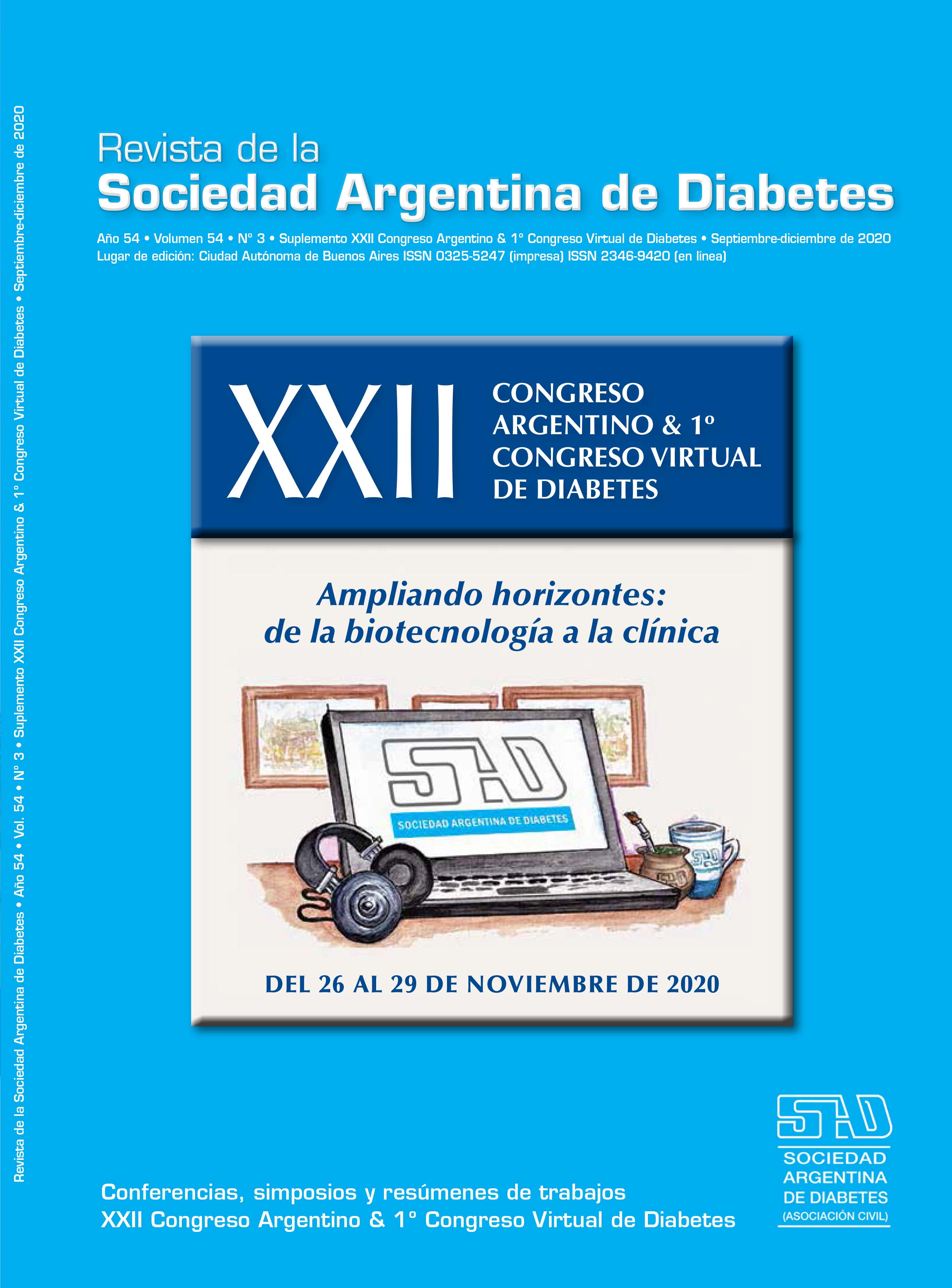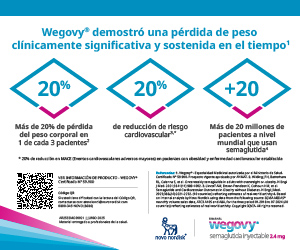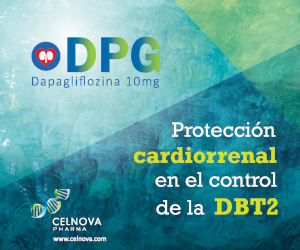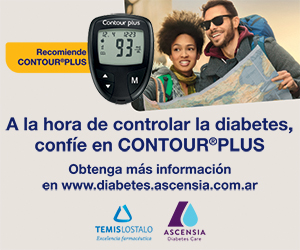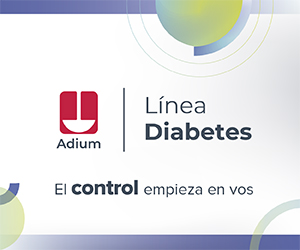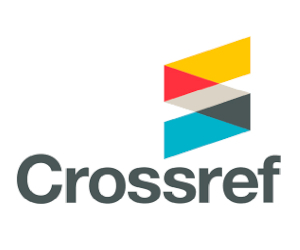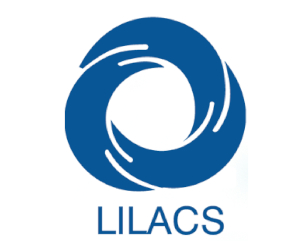P36 Relación de anticuerpos y función de la célula beta en adolescentes con diabetes tipo 2
DOI:
https://doi.org/10.47196/diab.v54i3Sup.422Palabras clave:
Anticuerpos, Función de la célula beta, Adolescentes diabetes tipo 2Resumen
Introducción: la diabetes mellitus tipo 2 (DM2) ha sido considerada por muchos años como una enfermedad metabólica sin participación del sistema inmune, pero en los últimos años esta visión cambió ya que el estado crónico inflamatorio e hiperglucemias que la caracteriza incrementa la producción de citoquinas dando lugar a la activación autoinmune. La DM2 en adolescentes es una entidad que se está incrementando debido al aumento de la obesidad en nuestro país y tieneuna aceleración en la declinación de la función de la célula beta pudiendo estar implicada la presencia de anticuerpos.
Objetivos: determinar la relación entre anticuerpos y función de célula beta en adolescentes con DM2.
Materiales y métodos: estudio transversal, retrospectivo en el cual se revisaron historias clínicas de 30 adolescentes con diabetes tipo 2 entre 12 y 17 años que acudieron al Centro de Investigación de Diabetes, Obesidad Y Nutrición (CIDON) en Lima, Perú. Se recolectaron datos demográficos, medidas antropométricas, glucosa basal, hemoglobina glicosilada y péptido C basal y anticuerpos: anti glutamato decarboxilasa (ANTI-GAD), anti-insulina(AAI), Anti-IA2(anti tirosin fosfatasa 2). Luego se dividió entre los que tenían al menos un anticuerpo positivo y los que no tenían anticuerpos y se encontró la relación con los parámetros de función de célula beta.
Resultados: se evaluaron 30 adolescentes con DM2 de los cuales el 50% era del sexo femenino. El 93,3% presentó acantosis nigricans. El anticuerpo más frecuente fue el anti insulina 16,67%. Se encontró significancia estadística con el péptido C (p: 0.014). No se encontró significancia clínica con HbA1c, glucosa, acantosis nigricans y el sexo (p>0,05).
Conclusiones: existe relación entre la presencia de anticuerpos y alteración del péptido C en adolescentes con DM2. La presencia de anticuerpos podría relacionarse con el pobre control metabólico en esta población.
Descargas
Publicado
Número
Sección
Licencia

Esta obra está bajo una licencia internacional Creative Commons Atribución-NoComercial-SinDerivadas 4.0.
Dirección Nacional de Derecho de Autor, Exp. N° 5.333.129. Instituto Nacional de la Propiedad Industrial, Marca «Revista de la Sociedad Argentina de Diabetes - Asociación Civil» N° de concesión 2.605.405 y N° de disposición 1.404/13.
La Revista de la SAD está licenciada bajo Licencia Creative Commons Atribución – No Comercial – Sin Obra Derivada 4.0 Internacional.
Por otra parte, la Revista SAD permite que los autores mantengan los derechos de autor sin restricciones.



